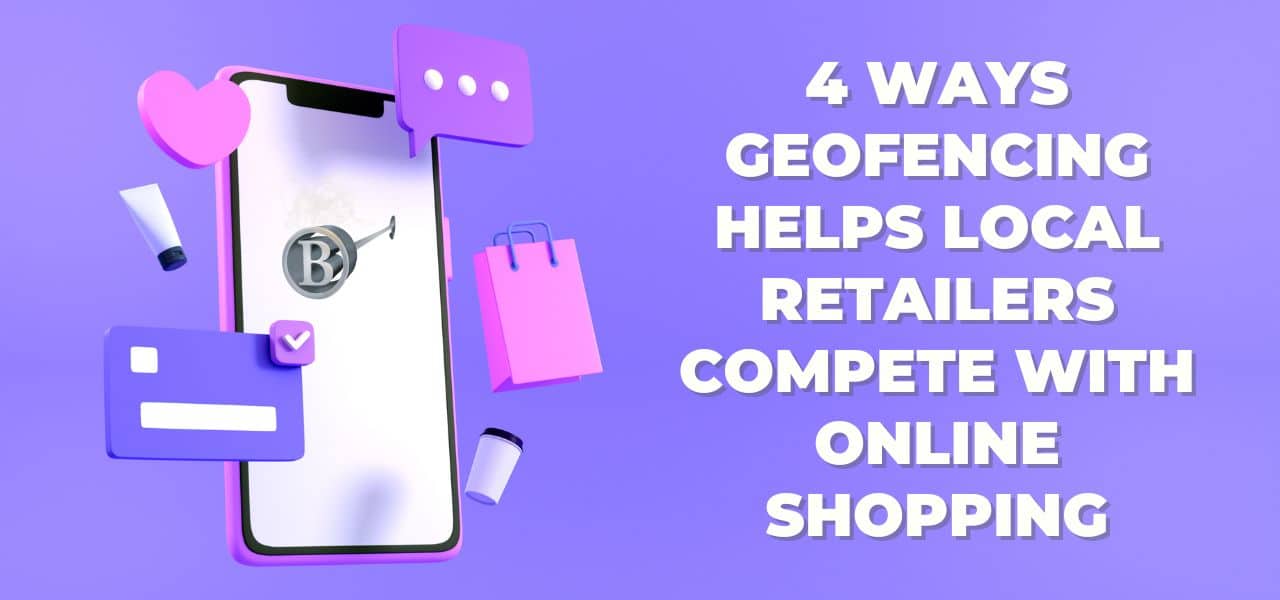Looking to compete with seamless online shopping experiences, retailers see geofencing as a way to level the playing field.
With 96 percent of Americans now shopping online to avoid crowds and save time, it’s not surprising that traditional retailers are struggling in the Amazon era. But thanks to technological advances, retailers are finding creative ways to leverage their physical presence to compete with online shopping.
Lately, physical retail stores are increasingly embracing geofencing to keep up and even outpace online sellers. They can track their visitors just like on the web, and even steal them from their competition, through a strategy called “geo-conquesting.”
Here’s what makes geofencing so effective.
Refresher on Geofencing Technology
Geofencing technology allows retailers to place a digital “fence” around a brick-and-mortar location, and track the foot traffic going in and out. This means that businesses can keep tabs on a customer’s location and send offers to them based on their history of where they’ve been shopping.
For example: If you own a furniture store, you can geofence all the other furniture stores in your market, then send ads to your competitor’s customers on their phones, computers, and even their smart TVs. Then using the same technology we can proof conversion, meaning after that customer has seen your ad we can tell if they have come to your store and how many days it took to convert them as a potential customer.
Once you know a customer’s habits and where they are shopping we can create custom messaging targeting their needs. Tailored interactions that are more relevant to the customer. You can then tap into these contextual cues to create highly targeted offers.
Geofencing pulls up relevant data on a retailer’s customers, allowing them to improve engagement, increase loyalty, and understand how the time a customer spends in-store relates to their overall spending.
- Location Services Allow Retailers to Compete More Effectively
Instead of only setting perimeters around their physical retail locations, retailers are also setting a geofence around their competitors’ locations to intercept customers with enticing offers and promos to win back their business.
Geofencing is already being used effectively by Starbucks, L’Oreal, McDonald’s, and several others. Recently targeting has become more efficient. Now Geofences are accurate within 10 feet.
- Geofencing Fosters Customer Loyalty
It’s important to note that online shoppers are famously fickle. Despite marketers spending $90 billion a year on non-cash rewards for loyalty programs, 78 percent of consumers claim to be less loyal today than three years ago.
Here’s where combining technology and the human element can make a difference. With geofencing, businesses can get to know their customers and provide the best possible experience. Being greeted by name as you walk into a store brings a new level of personalization into the physical retail experience.
Geofencing is targeted marketing at the individual customer level. For example, Geo fencing can help your customer remember the great experience at your location. Or better convert them from your competitor after a bad experience.
It’s no secret that top-of-mind awareness is key to customer loyalty. Recurring marketing after your customer leaves helps keep your brand top of mind and encourages repeat visits.
- Deliver the Ideal Omnichannel Customer Experience
I should note here that geofencing isn’t limited to brick-and-mortar businesses. It can help to increase traffic between a retailer’s physical location and its online storefront. Geofencing marketing provides a win-win situation for retailers and customers by seamlessly integrating the online and offline experience via mobile.
First, your potential customer is exposed to your brand on their phone, then at home or working on a computer, then again while they are watching streaming television.
Retailers can engage with customers via mobile while in a nearby location, sending messages about in-store promos, or an event that may be taking place in the store. Then, when a customer makes a purchase in-store, they’ll receive additional messages or offers regarding their next online purchase. Sending traffic back and forth between the store and the web.
Customers receive a positive shopping experience, thanks to the added convenience and personalized customer service.
- More Transparent Measurement
Geofencing is also transforming advertising attribution metrics. Traditionally, marketers have relied on metrics such as impressions or click-through rates to infer ROI on their campaigns. Valuable information no doubt. With accurate geofencing, marketers are now leveraging powerful new metrics, such as click-to-visit, footfall conversion, and cost per lead that better reflect the real-world buying decisions of customers. As a result, many advertisers are changing their pricing to charge for successful visits, not just impressions.
With more transparency around the ROI of their digital marketing campaigns, retailers can directly measure which advertising campaigns were effective in driving customers in-store. Compare creative message results or which competitor is more likely to lose business to your company.
Geofencing is helping local brick-and-mortar retailers compete more effectively with online shopping experiences while customers receive a highly targeted, more relevant shopping experience.
For help with your GeoFecing campaign or questions about measuring your marketing correctly call Branding Iron Management today. Our Bryan College Station-based advertising agency has over 60 years of combined experience.










